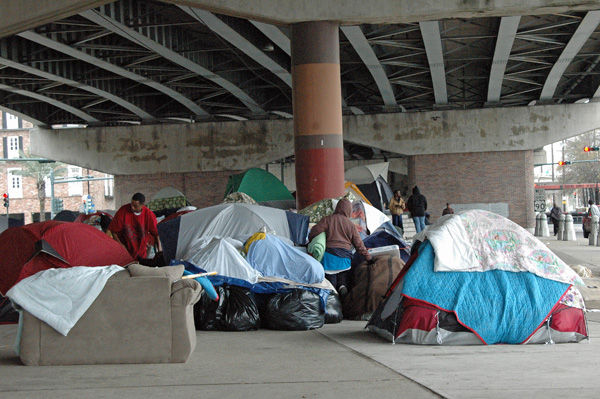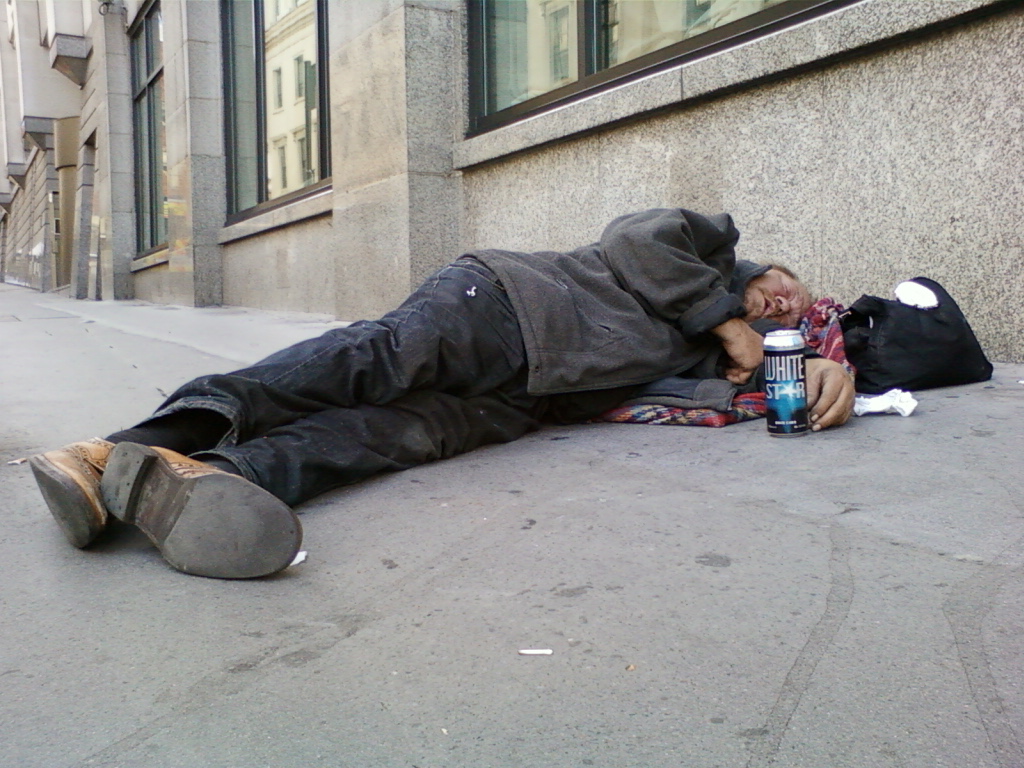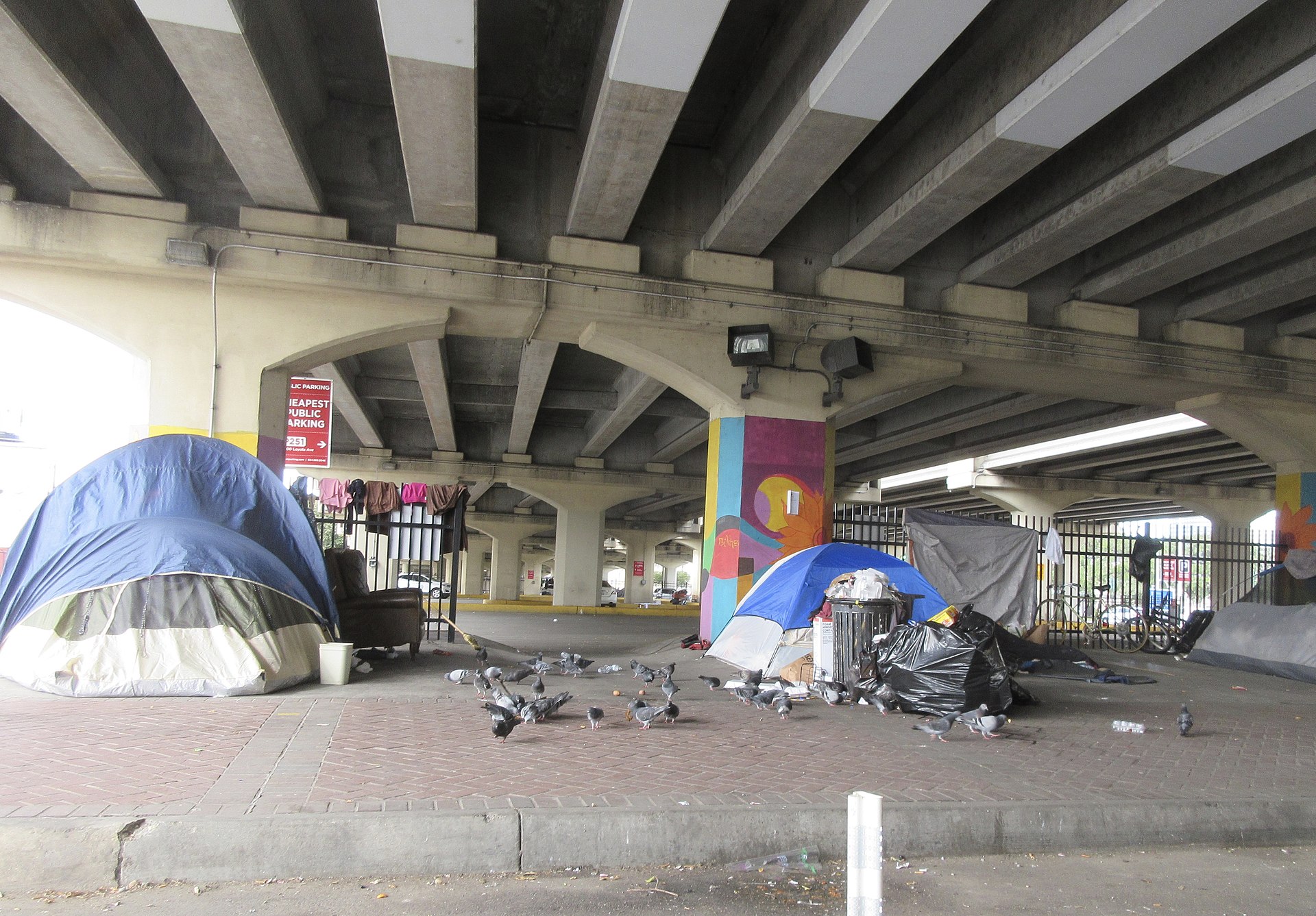Editor’s Note: According to a History of New Orleans Voodoo, “The core belief of New Orleans Voodoo is that one God does not interfere in daily lives, but that spirits do. Connection with these spirits can be obtained through various rituals such as dance, music, chanting, and snakes,” and in this way, the mystery associated with New Orleans begins to materialize. However, it is important to know the truth behind these myths in order to honor the history of the city and to adequately move in the right direction in the fight for social and environmental justice. From its history and culture, all the way to its arts and food, the tourism industry in New Orleans has perpetuated a vast array of myths that continue to exploit the city. Yet, while New Orleans is so popular and well known, the question remains: how much of what people know is actually true, and how does this impact the City? Through exploring New Orleans’ Senegalese roots, highlighting its Honduran connections, and uncovering the origins of hip-hop, the following articles provide a keen insight into the various ways the tourism industry in New Orleans continues to spread disinformation for monetary gain. This piece on homelessness was originally published on March 8, 2022.

Homeless tents set up in New Orleans. Photo credit: The Revolution
According to Aahil Rajpari’s blog post “What is Homelessness and Why is it an Issue,” “it is estimated that at least 150 million people across the world are homeless.” To shine a light on the degree of the issue, Rajpari highlights that the United Nations Office of the High Commissioner has declared homelessness as “a global human rights crisis.” While homelessness is the overarching issue, the lack of access to (free) psychiatric care for homeless populations is a particular problem underneath the principal issue of homelessness. In Benjamin Schneider’s article, he underlines that in the early 20th century, closures of considerably large psychiatric institutions occurred. As a result, he states that “from 1950 to 1970, the patient population of national, state, and county psychiatric institutions decreased from over one million to less than 100,000.”
The lack of access to (free) psychiatric care for homeless populations is an issue because there is a link between mental illness and homelessness. According to the “Serious Mental Illness and Homelessness” paper from 2016, “people with untreated serious mental illness comprise an estimated one-third of the total homeless population” in this country. The same paper states that because of the closing of mental hospitals in the 20th century, “formerly hospitalized individuals without resources who were unable to live independently moved to the streets, making up a growing portion of the homeless population.” These former psychiatric patients faced homelessness. For, mental illness is a cause of homelessness according to research foundations. The Brain and Behavior Research Foundation states that “an individual’s mental illness may lead to cognitive and behavioral problems that make it difficult to earn a stable income or to carry out daily activities in ways that encourage stable housing.” Moreover, the closing of mental hospitals meant that these former patients could not access treatment for their mental illness and thus could not escape homelessness. The 2016 paper underlines that the lack of access to mental health treatment “leaves increasing numbers of people who require intensive services to remain unstable and experience negative consequences, homelessness among them.” The closing of mental hospitals also meant that people who were already homeless could not access treatment for their mental illness and thus were stuck in their homeless condition. This information suggests that the lack of (free) access to psychiatric care is the root issue. If the homeless, specifically those with mental illness, had access to (free) psychiatric treatment, they could become mentally stable and perhaps climb their way out of homelessness.
The lack of access to (free) psychiatric care for the homeless population is specifically an issue in New Orleans due to the closing of Charity Hospital after Hurricane Katrina. The documentary Big Charity: The Death of America’s Oldest Hospital states that Charity Hospital was the “heartbeat” and “lifeblood” of New Orleans. Charity workers were there to treat people and save lives regardless of whether people could pay or not. Love was the culture of the hospital; it was never about money.

Photo by Deadly Sirius
After Hurricane Katrina, despite its ability to be reopened, The charity was shut down for good. According to the documentary, “the closing of Charity Hospital meant that 9/10 of the public hospitals in Louisiana had been closed or privatized since Katrina.” In Big Easy Magazine, Jenn Bentley underlines that Charity’s closure “effectively eliminated the city’s health safety net, leaving most of the city’s most vulnerable residents without access to health care.” The people of New Orleans truly bore the brunt of Charity’s shutdown; for in her 2011 article, Katy Reckdahl states that “the homeless population in Orleans and Jefferson parishes stands at 9,200, 70 percent higher than before Hurricane Katrina.” The change in the homeless population in New Orleans from before and after Katrina, coupled with the closing of Charity Hospital, indicates the link between mental illness and homelessness in New Orleans, which is caused and maintained by the lack of (free) psychiatric care. As a result of the closing of Charity Hospital, a public hospital that served 80 to 90 percent of New Orleans’ low-income residents, individuals could not access free treatment for their mental illness and thus faced homelessness (mental illness as a cause of homelessness has already been established previously). Additionally, those already homeless could no longer access free treatment for their mental illness and thus remained homeless. Today, University Medical Center New Orleans is the only public hospital in New Orleans. Based on 2017 findings, almost every death within the homeless population “can be attributed to years, sometimes decades, of untreated substance abuse and mental health issues; and the city doesn’t have the resources to meet the overwhelming need and prevent future tragedies.”
In 1984, after addressing the complex issue of homelessness nationwide and specifically in Boston, the city’s mayor Raymond Flynn, and Massachusetts Governor Michael Dukakis decided to act. They organized a community coalition and collectively wrote a grant proposal for a 4-year Robert Wood Johnson Foundation pilot grant, given to Boston in 1985. With that money, Boston’s leaders established the Boston Health Care for the Homeless Program, “the country’s largest and most comprehensive freestanding health care for the homeless program.” Acknowledging that most homeless people are uninsured and cannot access primary and preventive health care, the program made its mission “to ensure that the highest-quality health care would be available to all homeless men, women, and children in Boston.” The program delivers medical services through primary care clinics and direct care clinics, as it focuses on providing care to homeless people on-site via its Street Team. Overall, “by utilizing multidisciplinary teams of doctors, nurse practitioners or physician assistants, nurses, mental health clinicians, and case workers,” BHCHP aims to deliver ongoing care across its in-house clinics and on the street as well.

While the Boston Health Care for the Homeless Program proves to be an impactful program, which will be shown below, there are a couple of limitations to the program. One limitation is that the program required a lot of money to launch. Fortunately, Boston received a grant, but that grant was large. According to “The Boston Health Care for the Homeless Program: A Public Health Framework,” Boston received a “4-year RWJF pilot grant ($3000,000 annually),” which was “subsequently matched by an additional $250,000 annually from the state of Massachusetts.” Another limitation is that the program required a sizeable portion of healthcare workers to launch and maintain it. The following statistic shows this limitation: In 2009, “with more than 350 full- and part-time staff, BHCHP’s annual budget grew to $30 million.” Thus, more staff requires more money.
Since its establishment, the Boston Health Care for the Homeless Program has had a significant impact on Boston’s homeless population. One of the program’s most notable achievements was its employment of an electronic medical record system. In fact, BHCHP “became the country’s first health care for the homeless program to implement an electronic medical record system.” This system has allowed its medical professionals to keep track of and monitor homeless people’s medical conditions. More specifically, the medical record can hold the collection of “all patient clinical data, allowing monitoring of health outcomes, reporting on quality measures, and assessment of benchmarks in chronic disease management.” The program has also made great strides in getting their patient’s healthcare insurance. By 2005, BHCHP successfully secured insurance for 75% of all its patients. In addition to the program’s technological advancements and progress regarding insurance, it has ensured that the homeless population of Boston receives routine vaccines, tests, and checkups for pertinent viruses and bacteria. Today, “people living on Boston’s streets now receive annual flu vaccines, periodic skin testing for tuberculosis, regular blood pressure checks, and hemoglobin A1C testing.” As of the time the public health report was published online in 2011, BHCHP was “working closely with the Boston Public Health Commission to actively monitor homeless persons for signs and symptoms of swine flu.” Furthermore, the BHCHP is responsible for helping a large portion of Boston’s homeless population. According to BHCHP’s official site, about “25,000 individuals are homeless in Boston for some period of time each year,” and of that group, “BHCHP provides medical care to more than 11,000 individuals in more than 100,000 patient encounters.”
In order to combat the lack of access to (free) psychiatric care for the homeless population in New Orleans, the city should develop a program that is similar to the Boston Health Care for the Homeless Program, but one that puts an extra emphasis on ensuring that homeless people receive first-rate mental health care. While building another public hospital in New Orleans to accompany the already-standing University Medical Center in New Orleans would prove beneficial for low-income residents and the homeless, doing so would be a long process. As the Big Charity documentary highlights, it took University Medical Center New Orleans ten years to get fully up and running. The first step New Orleans must make to establish a program as successful as BHCHP is to acquire the money necessary to launch such an innovative project. As aforementioned, the Boston mayor and his community coalition wrote a grant proposal for a pilot grant, which was given to them the following year. Perhaps New Orleans would have to secure adequate funding in the same manner. In addition to obtaining enough money, there would have to be enough healthcare workers willing to dedicate themselves to a new program. These health care workers would have to be dedicated to helping the program achieve its goal of guaranteeing that all homeless people receive top-notch health care, specifically mental health care.
With all this being said, the New Orleans program could avoid having to obtain a large portion of the money and worry about hiring enough healthcare workers if it used medical volunteers and medical school students. Medical volunteers and medical school students are not typically paid, and there are also many of them. Additionally, it is essential to note that the New Orleans program would not require as many healthcare workers as the Boston Health Care for the Homeless Program requires. New Orleans is a smaller city than Boston and thus does not need as many medical staff.
The New Orleans program would also need a solution to regulating medications for homeless people, specifically, medicines that help combat mental illnesses. The program could regulate medication for the homeless by having a designated group of medical staff responsible for making rounds with the homeless and giving them their medications in the morning and at night. This designated group would keep track of and maintain all the homeless individuals’ medication, eliminating the possible issue of drug abuse. In other words, the homeless would not be allowed to hold onto their prescription bottles and would only have access to their daily dosage.
Furthermore, the program in New Orleans would follow the concept of “street medicine” that BHCHP developed. “Street medicine” “entails directly delivering primary and continuous care under bridges, in parks and encampments, down back alleys, on the grates, and in doorways.” In alignment with the “street medicine” concept, the program in New Orleans would develop a street team equipped to tend to various health-related needs, including mental illness, that would go out frequently and care for those on the street. Referring back to BHCHP, the program’s street the team included “mental health and substance abuse specialists.” The hope would be that therapists and psychiatric coaches willing to work in the field would be on the New Orleans program street team.
As argued and shown earlier in this article, there is a link between mental illness and homelessness. By implementing a program in New Orleans that helps fight the lack of access to psychiatric care for the homeless population by guaranteeing high-quality health care, specifically mental health care for the homeless, mental illness will be reduced and, thus, homelessness as a whole.
 NOLAbeings Multimedia artist Claire Bangser created NOLAbeings as a portrait-based story project that marries...
NOLAbeings Multimedia artist Claire Bangser created NOLAbeings as a portrait-based story project that marries...  Voodoo in New Orleans: Reviving history: New Orleans fortune telling This article takes a deep dive into the history of Voodoo in New Orleans, its hybridization with Catholicism, and its present-day place in the city's culture. The author visits fortune-tellers in the French Quarter, using their guidance as a tool for introspection rather than a deterministic predictor of the future. Through her experiences in New Orleans, the author feels a mystical connection to both the past and the future.
Voodoo in New Orleans: Reviving history: New Orleans fortune telling This article takes a deep dive into the history of Voodoo in New Orleans, its hybridization with Catholicism, and its present-day place in the city's culture. The author visits fortune-tellers in the French Quarter, using their guidance as a tool for introspection rather than a deterministic predictor of the future. Through her experiences in New Orleans, the author feels a mystical connection to both the past and the future. 